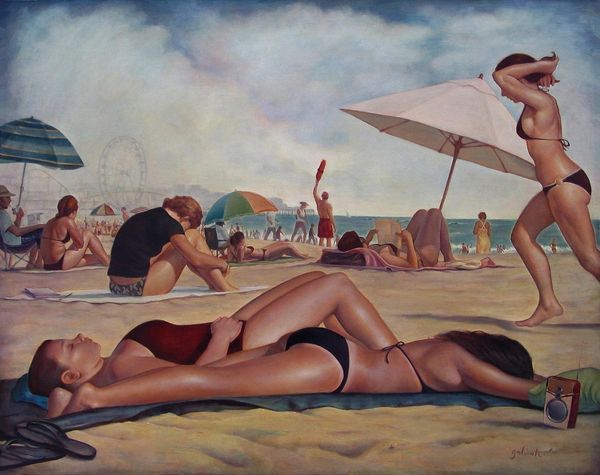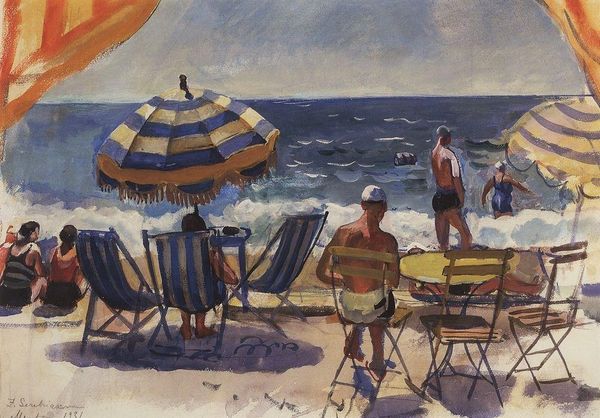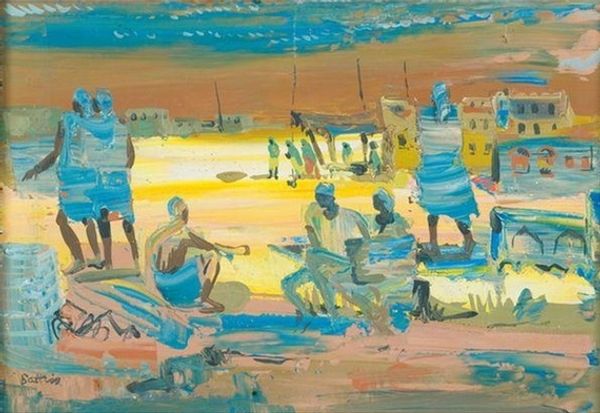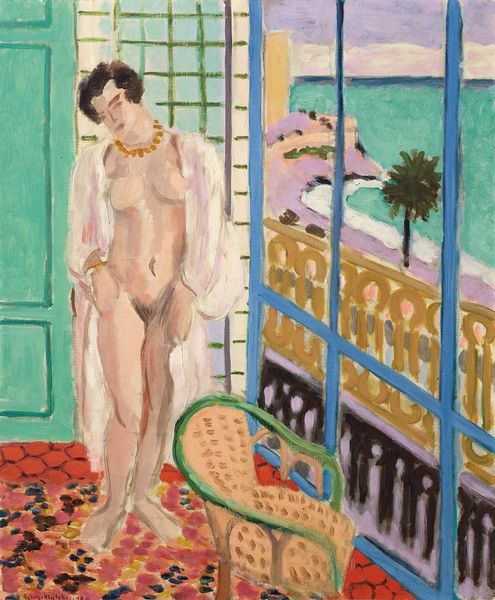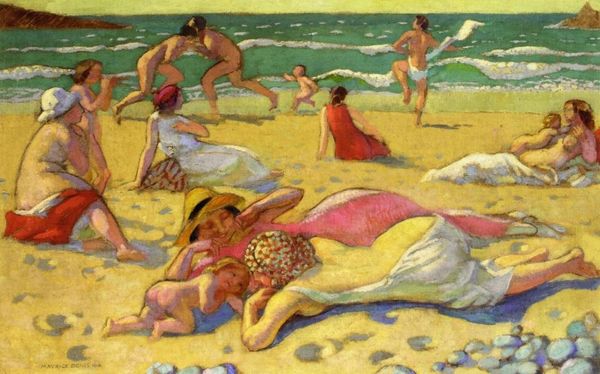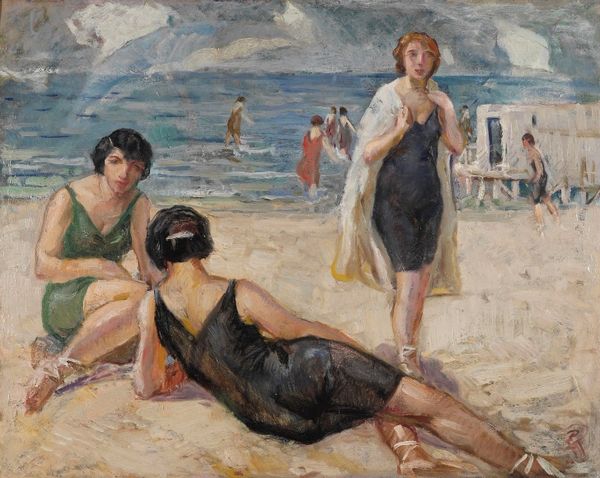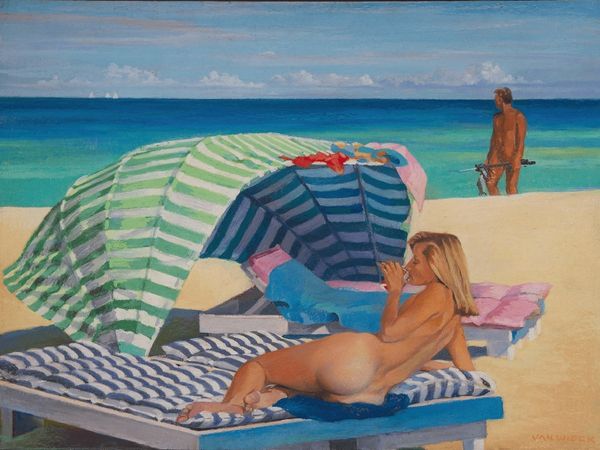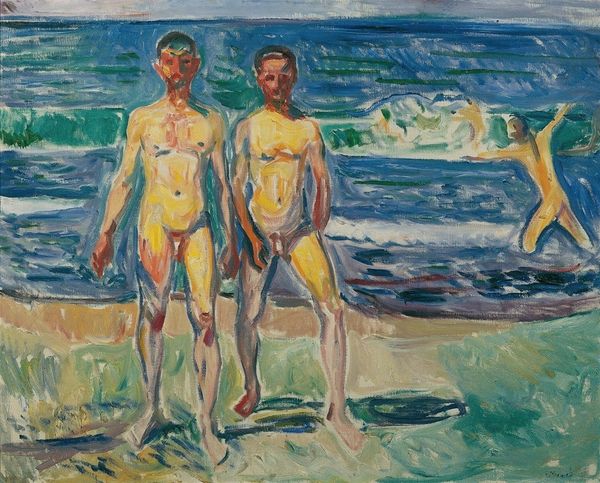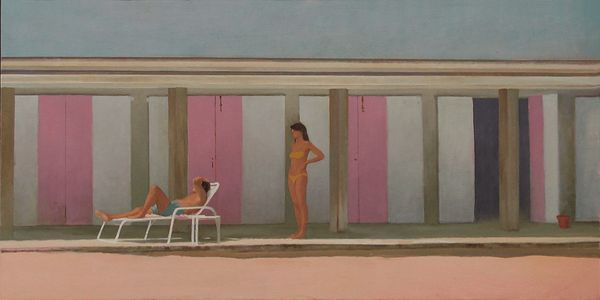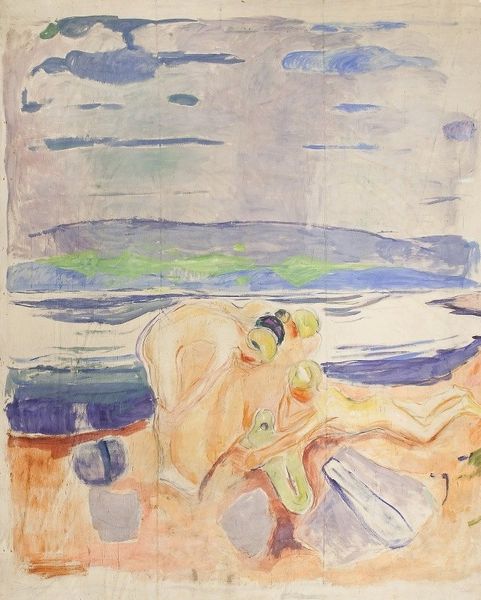
Copyright: Public domain US
Editor: Henri Matisse’s "Odalisque on the Terrace," created in 1922, presents two female figures in a scene that almost feels staged. One woman is reclining, seemingly asleep, while the other sits upright, holding what looks like a violin bow. The use of watercolor gives the piece a soft, almost dreamlike quality, yet the subject matter feels deliberate and provocative. What’s your interpretation of this painting? Curator: Well, this is one of many odalisque paintings that Matisse created. It's interesting to think about the orientalist tradition at play here and the way Western artists often depicted Middle Eastern or North African women. Consider what role Matisse played in perpetuating these visual tropes, especially in the socio-political context of colonial France. How do you think this work might have been received in its time, considering its themes and style? Editor: It feels a bit problematic today, but I imagine in the 1920s, it might have been viewed as exotic and maybe even a bit rebellious. The casual nudity, for instance. Were these works merely decorative or were they making a larger statement? Curator: That’s a critical question! While some might view it as a simple celebration of form and color, others might critique its power dynamics. It reflects the complex relationship between the artist, his muse, and the audience. Consider how the institution of art has historically elevated certain perspectives while marginalizing others. Do you think our understanding of the piece changes based on our present-day awareness of these power dynamics? Editor: Absolutely. Knowing the historical context makes you look at the painting in a different light. It’s not just a pretty picture; it's a document of its time, complete with all its complexities. Curator: Precisely. And by acknowledging those complexities, we can engage with art in a more nuanced and critical way. It becomes less about aesthetic appreciation and more about understanding the politics of imagery. Editor: I see now how considering the cultural and political atmosphere surrounding this work is essential to truly grasping its significance. Thank you!
Comments
No comments
Be the first to comment and join the conversation on the ultimate creative platform.
